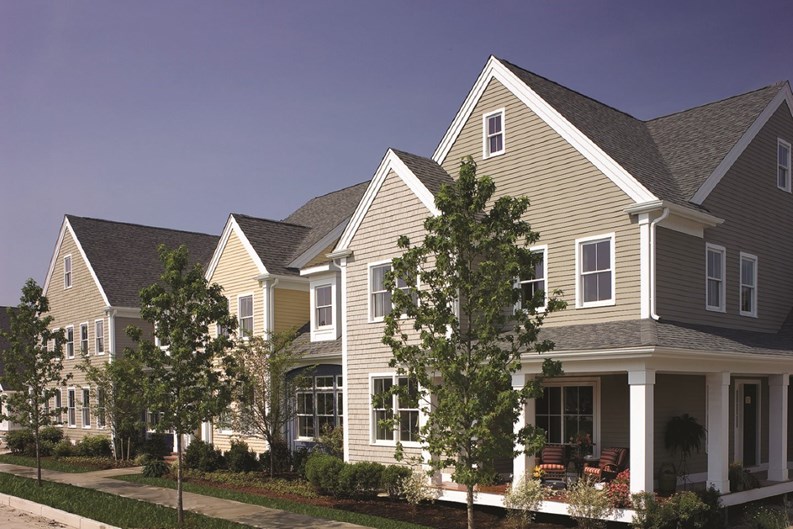Do you remember when the screen door would slam as Johnny ran across the porch to the sidewalk and yelled, "I'll be back later!" He joined his gang of friends and went to the ball field to be outdoors all day.
At the turn of the twentieth century, Traditional Neighborhood Design (TND), now renamed New Urbanism, created some of our most attractive communities. Houses and streetscapes were designed for people, not automobiles. Residents could easily walk through the neighborhood to visit friends or to shop at neighborhood stores.
Somewhere along the way, we allowed the automobile to take priority over pedestrians and our neighborhoods have never been the same. Our street-scapes are now dominated by cars. Sidewalks, street trees and pedestrian lighting are often eliminated. Our current residential pattern seems to tie us to the automobile for every activity.
But the traditional neighborhoods of our youth are now making a comeback in new communities like Red Mill Village in Norton, Massachusetts and WestRidge in Hudson, Massachusetts.
Pedestrians Take Precedence
Reflecting the character of our older, more graceful communities, Red Mill Village and WestRidge are modeled on the original principles of TND. Planned with the pedestrian in mind, an extensive network of walkways winds through the site. Street trees, benches, wide sidewalks and decorative street lighting make these communities a very attractive pedestrian experience. To further enhance the quality of the pedestrian streetscape, most private driveways and garages are located behind the houses and served by a common driveway that runs along the rear of each yard.
The homes, which are specifically designed for use in a traditional neighborhood like Red Mill Village, create an interesting and attractive edge to the streetscape. The classic architectural lines and historic detailing provides a rich, but consistent visual experience.
Traditional Neighborhood Design Elements
The logic of architecture that evolved with some of our older neighborhoods can be replicated with discipline in our newer neighborhoods. Each community that seeks to hearken back to the traditional living spaces must have certain elements. While the nomenclature may change, the basic elements are:
1. The Village Center
2. The Village Neighborhood
3. The Village Edge
The common sense of early American settlers to set aside common space in the center of a town is used again in traditional neighborhoods. These areas should be gathering places for social and business activities. At Red Mill Village, a large village green is surrounded by a mix of living and community uses. Red Mill Crossing, which will abut the green, will be a commercial building housing a country store, the postal center, property management and perhaps a catering business. The other end of the green is anchored by the Red Mill Village community building, a Quaker-style, very large center that serves as the central meeting place.
Housing that is close together, with sidewalks and front porches, is an invitation to friendly interaction. This is how most of us grew up and the feeling is re-created at Red Mill Village and WestRidge. Cars are steered to the double-loaded back alleys and the pedestrian in pre-eminent. A mixture of attached and detached homes creates a mélange of lifestyles that is more interesting than a series of row houses.
Apart from the homes, the village must have defined, useful and beautiful edges. In new traditional communities, walking trails, conservation land, and robust landscaping all combine to create an edge that is defining, yet not restrictive.
The Practical
Traditional Neighborhood Design is exciting because this is the way people want to live their lives, especially active adults who are ready to enjoy themselves in a community of neighbors.
People who have reached the age of 55 years want to enjoy themselves after a life of hard work. They want to live in a community with shared values, that is attractive to live in and limits the amount of time they need to spend on home maintenance. Red Mill Village and WestRidge seek to incorporate all of these elements in age-restricted communities based on Traditional Neighborhood Design.
It is this combination that has already garnered some amazing awards for Red Mill Village. This community has been named twice as Best Active Adult community in the nation, once by the NAHB 50+ Senior Housing Council and once by
Back to the Future
Remember Johnny who was running out the door? Well he is now about 60 years old and he still wants to walk out the front door, across the porch to join his friends and neighbors on the sidewalk for a day of fun. The only difference now is that he doesn't need to mow the lawn for pocket money.




Leave a Comment